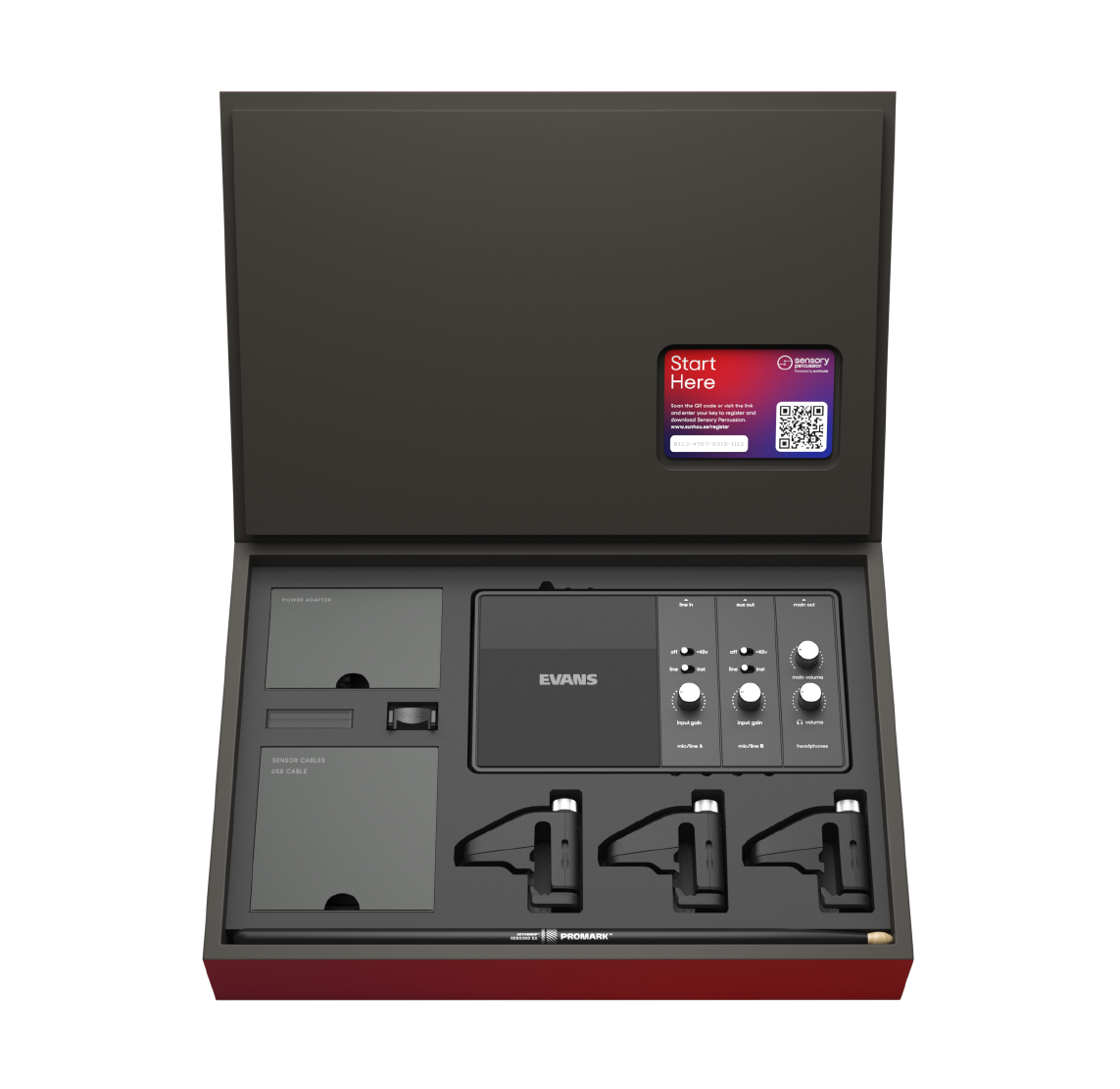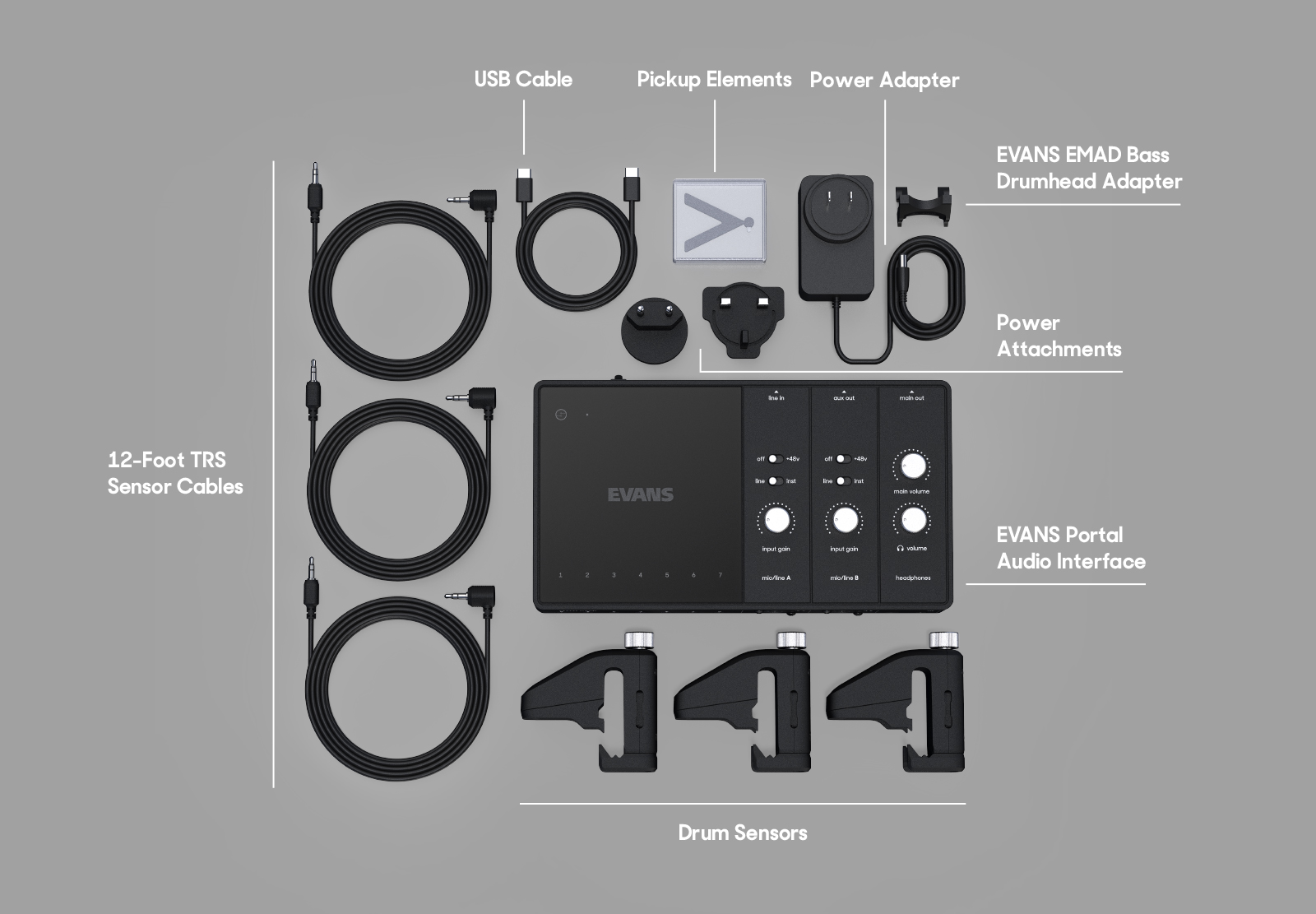What's in the Box
When you open the box, you will find the following gear:
- Sensory Percussion Software download card (1)
- EVANS Sensory Percussion Portal Audio Interface (1)
- Sensory Percussion Drum Sensors (3)
- Drum Sensory Pickup Elements (12)
- 12-foot 3.5mm TRS Sensor Cables (3)
- Power Adapter for Portal (1)
- USB-c cable to connect Portal to your computer (1)
- Evans EMAD Bass Drumhead adapter (1)
- Pair of ProMark ActiveGrip Drumsticks (1)


What else you will need to get started

Drums. This may seem obvious, but you’ll need drums to use Sensory Percussion. We designed the sensor to fit the standard western drum kit (sorry, it most likely will not fit on any hand drums). The sensor fits both snares, toms and kick drums. Well-tuned drums with healthy heads (mesh or standard) that don’t have any rattling hardware or loose lugs will work best (in extreme cases, loose parts can cause false hits and confuse the software). An important aspect of this system to understand is that Sensory Percussion listens to your drums and inherits its range of control from their acoustic qualities. So, if you have a dead sounding drum covered in old gaffer's tape with dents in the head, you might not get as much timbral range from the software as you'd hope. We find that tighter drum heads provide more detailed control because they have more detailed control acoustically!
A computer. The Sensory Percussion software runs on macOS and Windows. Most newish computers will work fine, but a faster, multi-core processor with 8 or more GB of RAM is recommended.
Speakers or headphones. You'll need some way to hear what you're playing on Sensory Percussion. While laptop speakers might work in a pinch, you'll have the best experience with good headphones (for the lowest latency) or dedicated monitors. The Portal interface has a range of output options for connecting speakers and headphones. We also recommend good-old-fashioned wired headphones and speakers over wireless ones for the best latency experience.